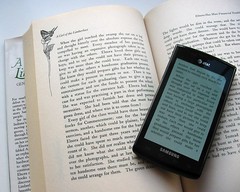
Speakers: Michael Levine-Clark & Christopher C. Brown, University of Denver
If someone checks out a physical book, do you know if they really read it? If someone accesses an ebook, do you know if they really read it? If a faculty member has a print book checked out for a year, is it more valuable to them than an ebook they access several times?
Sometimes, the title format in the catalog record can influence what is found and used. Vendor records can sometimes have series names in the beginning of the title, which the cataloger would not do with print.
ISBNs don’t match/merge easily. His solution was to remove the check digit and the prefix, and match on the “ISBN 9”. This works, mostly, but another solution was needed. Ended up having to do a lot of matching to pull together useful comparison of circulation and download data to compare e versus p use.
They found that when both formats were available, a little over half of the print books were used, and less than half of the ebooks were used. Of the titles used in both formats, there was higher use all around. The lowest level of use came from ebooks where the print was not checked out at all.
Use of electronic books may lead to print, but use of print doesn’t seem to lead to electronic. It may be that if dual format is higher it may be that good books get used no matter what format they are in. It may also be that e-discovery drives p-use.
Future considerations: the role of discovery and the role of ILL in a demand for print when electronic is available.

